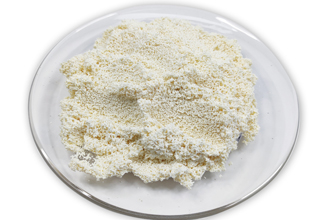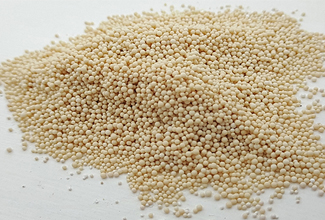Arsenic Removal from Water
Arsenic is a toxic substance with varying degrees of regulation. Once released, arsenic remains in the environment for a long time. High arsenic levels in private wells may have originated from certain arsenic containing fertilizers used in the past or simply from industrial waste. Elevated levels of arsenic can have negative adverse effects on health; especially if found in drinking water. We will focus on two of the most efficient arsenic removal systems that have proven capability in removing arsenic from water: Ion-Exchange method and Reverse Osmosis system.
Arsenic Removing Resin is an iron-infused anion resin that uses iron oxide to complex and remove pentavalent and trivalent arsenic from water. It is ideal for municipal water treatment plants, point-of-entry (POE) and point-of-use (POU) systems. It is compatible with most existing treatment plants, lead-lag or parallel design configurations.
Removing arsenic from water can take place by two methods: Ion-Exchange and Reverse Osmosis system. Both of these methods have been proven to be an effective solution to this issue. The difference between the two is the amount of contaminant removal. Ion-exchange focuses on a specific contaminant’s chemical charge in order to replace it with another harmless ion, while the RO system filters out multiple contaminants at once.
Arsenic Removing Resin is an iron-infused anion resin that uses iron oxide to complex and remove pentavalent and trivalent arsenic from water. It is ideal for municipal water treatment plants, point-of-entry (POE) and point-of-use (POU) systems. It is compatible with most existing treatment plants, lead-lag or parallel design configurations.
Removing arsenic from water can take place by two methods: Ion-Exchange and Reverse Osmosis system. Both of these methods have been proven to be an effective solution to this issue. The difference between the two is the amount of contaminant removal. Ion-exchange focuses on a specific contaminant’s chemical charge in order to replace it with another harmless ion, while the RO system filters out multiple contaminants at once.
Last One :
Next Article :
Related Products
-
 Arsenic Removing Chelating Resin To Extract Heavy Metals Removal Arsenic Removal Nitrate Ion Exchange ResinAppearance: Red brown to brown beadsIonic form:[R-FeO (OH)]+Volume complete exchange capacity(mmol/ml):≥2.0
Arsenic Removing Chelating Resin To Extract Heavy Metals Removal Arsenic Removal Nitrate Ion Exchange ResinAppearance: Red brown to brown beadsIonic form:[R-FeO (OH)]+Volume complete exchange capacity(mmol/ml):≥2.0 -
 Boron Absorbing Resin Macroporous Ion Exchange Chelating ResinAppearance: Creamy to beige opaque beadsIonic form: Free baseVolume complete exchange capacity(mmol/ml): ≥0.80
Boron Absorbing Resin Macroporous Ion Exchange Chelating ResinAppearance: Creamy to beige opaque beadsIonic form: Free baseVolume complete exchange capacity(mmol/ml): ≥0.80 -
 Macroporous Weak Acid Chelating Resin for Cobalt Removal Copper Removal Nickel Removal Zinc Removal ResinEquivalent foreign models: Puromet MTS9301Appearance: Spherical BeadsIonic Form: Na+ form
Macroporous Weak Acid Chelating Resin for Cobalt Removal Copper Removal Nickel Removal Zinc Removal ResinEquivalent foreign models: Puromet MTS9301Appearance: Spherical BeadsIonic Form: Na+ form
Message

